On March 10, the Moon will pass the “super-new-moon” phase and come closest to Earth in 2024. But astronomy enthusiasts are more interested in the fact that it will hide in the vicinity of the Sun for a few days and will not interfere with observing interesting objects in the night sky. For those who are just beginning to get acquainted with the “celestial treasures”, let us recall the ten brightest star clusters, galaxies and nebulae that reach their upper culmination between 9 and 11 pm in mid-March.
The Cancer constellation
A couple thousand years ago, the zodiacal constellation of Cancer was the site of the summer solstice, but now it has moved not even to the neighboring Gemini, but to Taurus. Nevertheless, all the remarkable objects of this constellation have remained in their places. The most famous of them is, of course, the M44 open star cluster, which has its own name, the Manger or Beehive. It is easy to find near the line connecting the 4th magnitude stars γ and δ Cancer (Assellus Borealis and Assellus Australis). The total brilliance of the cluster is slightly higher and amounts to 3.7ᵐ, making it easy to spot with the naked eye as a faint foggy spot larger than a degree in a clear, dark sky. It consists of more than a thousand luminaries more than 600 million years old, with distances of approximately 550-600 light-years. The Beehive was known to ancient Greek astronomers; Hipparchus mentioned it under the name Nephelion (a small cloud). At the latitude of Kyiv in our era, it can rise above the horizon by almost 60°.
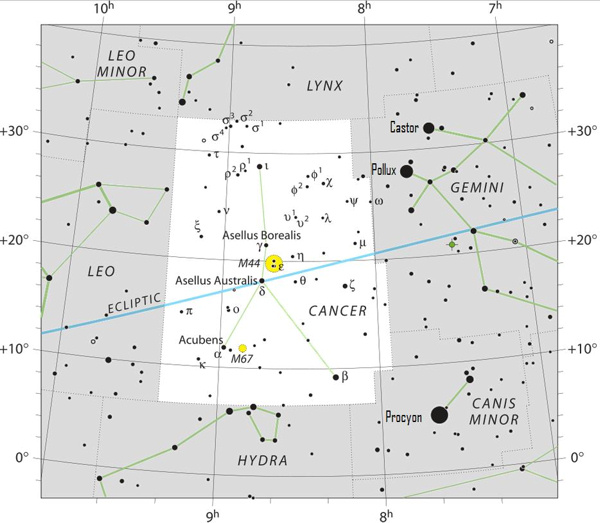
The second notable cluster within the constellation of Cancer is M67, the King Cobra. It is located 2° west of the star Acubens (α Cancer) and 8° south of M44. Its total brilliance falls just short of 6th magnitude, meaning that at least small binoculars or a telescope are required to observe this object. The distance to M67 is estimated to be between 2600 and 3 thousand light-years. The number of stars in it may exceed 500, of which about a hundred are similar in temperature and mass to our Sun. It is one of the oldest known open clusters: its age is probably more than 3 billion years.
The Hydra constellation
Of all the officially recognized constellations, Hydra occupies the largest area in the celestial sphere (1303 square degrees) and contains three objects from the Messier catalog — M48, M68, and M83. The latter two are observed low above the horizon in Ukraine, and we will mention them in the following reviews.
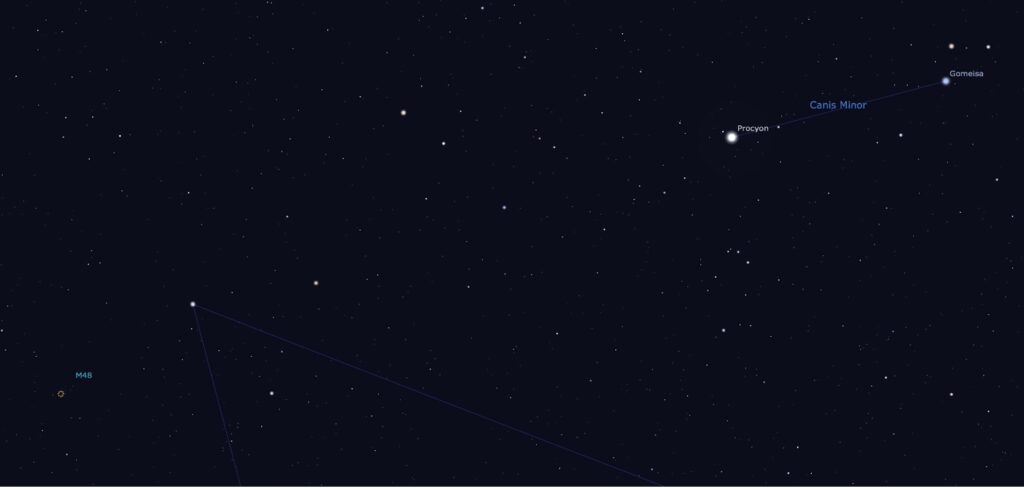
M48 is a open star cluster located 5° south of the celestial equator. About 440 stars are currently known to belong to it. Their age is estimated at 400-500 million years, and their total luminosity is slightly above sixth magnitude. We are about 2500 light years away from the cluster. Its position in the sky is indicated by the Canis Minor: M48 is located almost exactly in the opposite direction from Procyon (α of the Canis Minor) relative to the second brightest star in this constellation, called Gomeisa , and at three times the angular distance. For observations, you need to use at least small binoculars.
The Puppis (“Poop Deck”) constellation
The largest of the 48 constellations introduced in the second century AD by Claudius Ptolemy was the Ship of Argo. In 1755, while compiling a new star catalog, the French astronomer Nicolas Lacaille divided this constellation into three parts — Keel, Sails, and Poop Deck (without changing the designations of individual stars). The last part as a separate constellation is the northernmost, so it is best seen in our latitudes. The brightest of the three Messier objects present in the Puppis can be seen with the naked eye as a faint misty spot 12° east of Sirius (α of the Canis Major) in a sufficiently dark sky. This is the M47 open cluster, consisting of almost 500 stars with a total magnitude of 4.5ᵐ, scattered over an area roughly equal to the disk of the full Moon. Their distance is estimated at 1600 light years.
Binoculars or telescopes will show another open cluster, M46, one degree east of M47. It has a slightly smaller apparent size and a brilliance of 6ᵐ, but also contains about 500 stars, 5 thousand light years from us. More powerful instruments will make it possible to see the faint planetary nebula NGC 2438 against their background — it is almost four times closer.
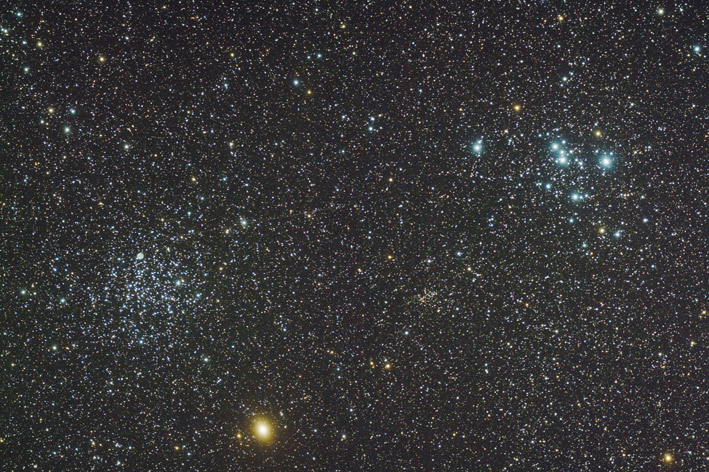
The southernmost Messier object in the constellation of Puppis and our subject for today’s review is the open cluster M93. It also has the sixth magnitude, but is much more compact: about a thousand of its stars occupy a conventional area of less than a quarter of a degree in the sky. According to the latest estimates, the distance to the cluster is 3600 light-years. It’s easy to see through binoculars, but it requires a clear, dark sky and an open southern part of the horizon — in Kyiv, M93 does not rise above 15°. In southern Ukraine, its maximum height is 19-20°.
The Leo constellation
From the star clusters belonging to the Milky Way, let’s move on to distant galaxies. The zodiacal constellation of Leo is rich in them. Most of them culminate at midnight or later in March, meaning that their observations are hampered by curfews. However, this does not apply to the galaxy NGC 2903, located in the sky under the “lion’s head” — 1.5° south of the star Alterf (λ Leo). At 10 pm in Kyiv, it is visible at more than 60° above the horizon.
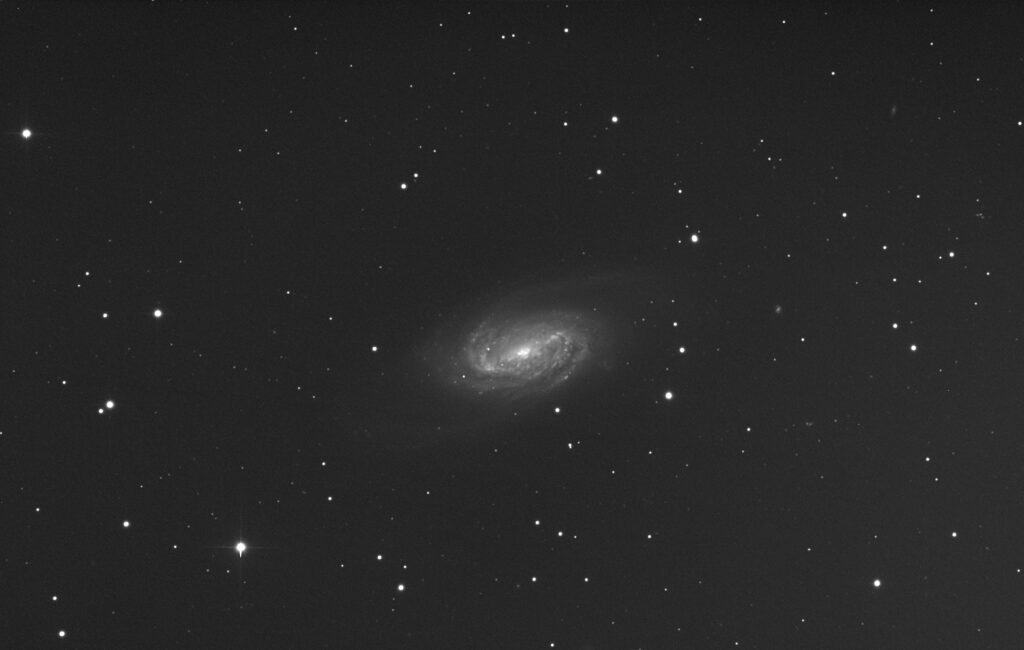
NGC 2903 has a luminosity of about 9th magnitude, which makes it possible to see it in telescopes with a diameter of more than 7 cm in a sufficiently dark sky. In their field of view, it will appear as an elongated nebular speck. 20 cm and larger instruments will allow you to see its spiral arms. This galaxy is very similar to our own in size, mass and structure. It is more than 30 million light years away.
The Big Dipper constellation
Now let’s look up, where the well-known asterism Big Dipper shines. Almost at the zenith is the “galactic pair” M81 and M82. These objects are unofficially called the Bode Galaxy (in honour of Johann Bode, who discovered it in 1774) and the Cigar. The former is a classic spiral, slightly smaller in size and mass than the Milky Way. It is about 12 million light years away. Its apparent magnitude of 6.9ᵐ allows people with excellent eyesight to see it without instruments under exceptionally good atmospheric conditions in a very dark sky, meaning it can be considered the farthest object visible to the naked eye.
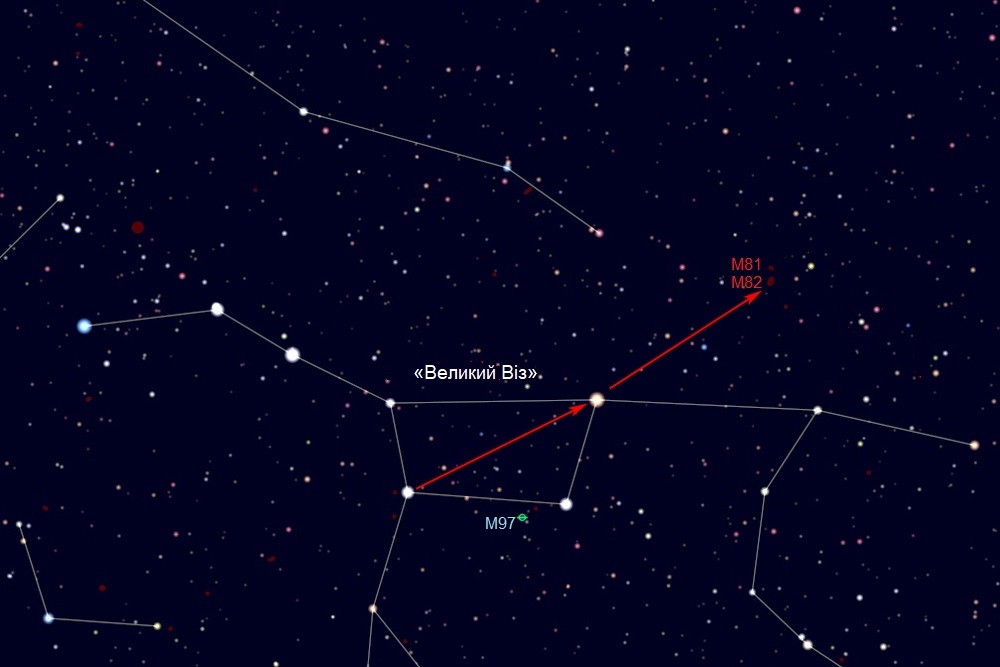
M82 is smaller and of a lower magnitude (8.4ᵐ). It is located a little closer to us, at a distance of 11.5 million light-years. This galaxy is experiencing a powerful gravitational influence from its massive neighbour M81, which is why its core is constantly undergoing active explosive processes. Even a small telescope can easily demonstrate its unusually elongated shape, which is why it got its name. You can find the pair of galaxies by drawing an imaginary line from the third star in the Big Dipper’s “bucket” (Phecda) to the first (Dubhe) and extending it for about the same distance.
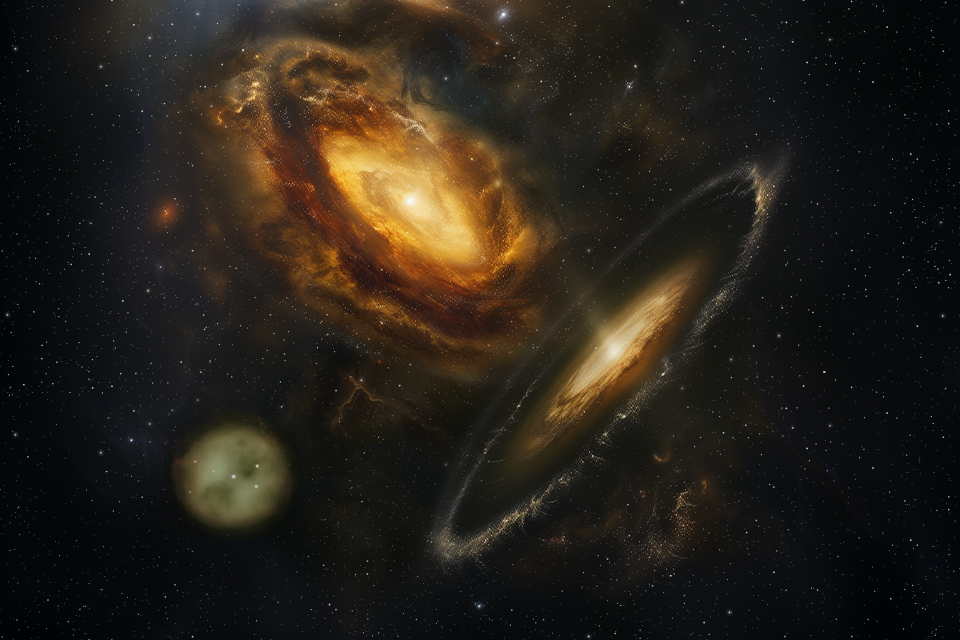
And since we are “travelling” through the Big Dipper, it is worth mentioning an object of another category — the planetary Owl nebula M97, which will also be the faintest in this review (apparent magnitude 9.7ᵐ). This is the remnant of a sun-like star that has exhausted all the hydrogen and helium fusion fuel in its interior, shed its outer shell, which we see as a nebula, and its core is gradually cooling, turning into a white dwarf. Small instruments in a dark, unlit sky will show M97 as a tiny greenish speck, and telescopes with a lens diameter of more than 15 cm will show two large, darker circles against a light background – the “eyes of an owl”. Observations will be greatly aided by a specialised OIII filter centred on the 501 nm ionised oxygen line.
Earlier, we wrote about the interesting phenomena associated with solar system objects that will be observed in March.

